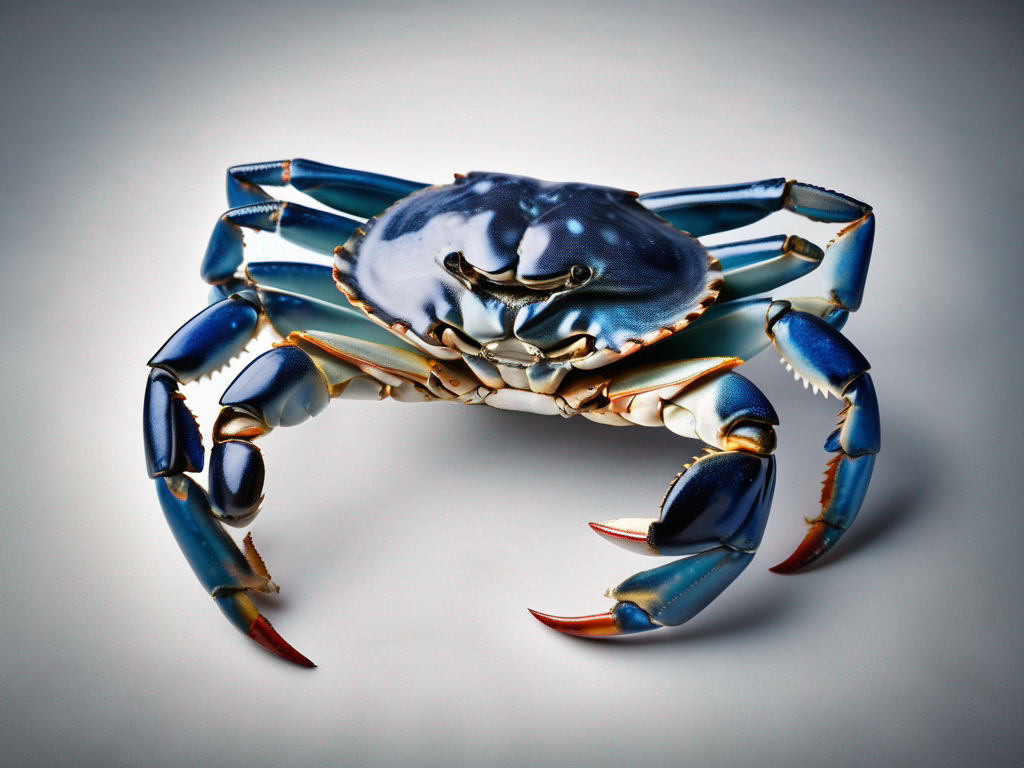
The Ultimate Guide to Properly Storing Leftover Blue Crab for Freshness
Get Your Free Food Safety Cheat Sheet
30 most common foods with instant answers. Print it and stick it on your fridge—completely free!
The Ultimate Guide to Properly Storing Leftover Blue Crab for Freshness
Blue crab is a delicious and popular seafood option, known for its sweet and delicate flavor. Whether you've cooked up a batch of blue crab at home or enjoyed a seafood feast at a restaurant, knowing how to properly store leftover blue crab is essential to maintain its freshness and flavor. In this guide, we'll walk you through the best practices for storing blue crab to ensure it stays safe to eat and delicious for future meals. (Blue crab)
Why Properly Storing Blue Crab is Important
Properly storing leftover blue crab is crucial for maintaining its quality and safety. When seafood is not stored correctly, it can quickly spoil and become unsafe to eat. Blue crab, in particular, is prone to bacterial growth if not handled and stored properly. By following the guidelines outlined in this guide, you can prolong the shelf life of your leftover blue crab and enjoy it without any concerns about food safety.
Steps to Store Leftover Blue Crab
1. Cool Down Quickly
- After cooking blue crab, allow it to cool down quickly to prevent bacterial growth.
- Avoid leaving cooked blue crab at room temperature for extended periods.
2. Remove Meat from Shells
- If you have leftover blue crab in shells, remove the meat from the shells before storing.
- Place the meat in an airtight container to prevent it from drying out.
3. Refrigerate Promptly
- Store leftover blue crab in the refrigerator within 2 hours of cooking.
- Place the crab meat in a shallow airtight container or resealable plastic bag.
4. Proper Refrigeration
- Keep the refrigerator temperature at 40°F (4°C) or below to ensure optimal storage conditions.
- Store blue crab in the coldest part of the refrigerator, away from other foods to prevent cross-contamination.
5. Label and Date
- Always label the container or bag with the date when the blue crab was cooked or stored.
- Use the oldest blue crab first to avoid any waste.
6. Use Within 3 Days
- Consume leftover blue crab within 3 days of refrigerating it for the best quality and safety.
- Discard any blue crab that shows signs of spoilage, such as a foul odor or slimy texture.
Tips for Storing Blue Crab
Properly Freezing Blue Crab
- If you want to extend the shelf life of leftover blue crab, you can freeze it.
- Place the crab meat in a freezer-safe container or bag, removing as much air as possible.
- Blue crab can be frozen for up to 3 months for optimal quality.
Reheating Blue Crab
- When reheating leftover blue crab, ensure it reaches an internal temperature of 165°F (74°C) to kill any bacteria.
- Avoid reheating blue crab multiple times, as this can lead to foodborne illness.
Best Practices for Handling Blue Crab
- Always wash your hands thoroughly before and after handling blue crab.
- Use separate cutting boards and utensils for raw and cooked blue crab to prevent cross-contamination.
Signs of Spoiled Blue Crab
- Discard any blue crab that has an off smell, slimy texture, or unusual discoloration.
- When in doubt, throw it out to avoid the risk of food poisoning.
Conclusion
Properly storing leftover blue crab is essential for maintaining its freshness and safety. By following the guidelines outlined in this guide, you can enjoy delicious blue crab dishes without any worries about foodborne illness. Remember to cool down the crab quickly, refrigerate promptly, and consume within 3 days for the best quality. Whether you're storing blue crab in the refrigerator or freezer, proper handling and storage practices are key to enjoying this delectable seafood treat. [Learn more about blue crab](/food/blue crab) and impress your friends and family with your knowledge of safe food storage practices. (Blue crab)
Related Posts
Here are some other articles you might find helpful:
Authoritative Food Safety References
These agencies and university labs inform every tip and health precaution we publish.
USDA FoodKeeper – Cold Storage Guidelines
Official refrigerator, freezer, and pantry timelines maintained by the U.S. Department of Agriculture.
Visit USDA FoodKeeperFDA Produce Safety Rule & Grower Guidance
Field-to-fridge handling practices that prevent contamination of fruits, vegetables, and leafy greens.
Visit FDA Produce SafetyCDC Foodborne Illness Prevention Hub
Surveillance-backed guidance on pathogens, symptoms, and steps to reduce foodborne illness risk.
Visit CDC Food SafetyUC Davis Postharvest Technology Center
University research detailing optimal storage atmospheres for produce after harvest.
Visit UC Davis PostharvestPenn State Extension – Home Food Preservation & Safety
Peer-reviewed extension bulletins on safe canning, chilling, and reheating practices.
Visit Penn State ExtensionGet Your Free Food Safety Cheat Sheet
30 most common foods with instant answers. Print it and stick it on your fridge—completely free! Want more? Upgrade to the complete guide with 70+ foods.
Scan your food directly and get instant safety info using our AI-powered camera feature.